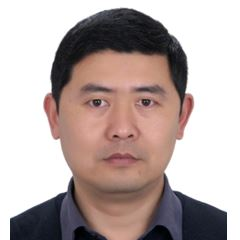Digital Twin in the Context of Manufacturing
A special issue of Machines (ISSN 2075-1702). This special issue belongs to the section "Advanced Manufacturing".
Deadline for manuscript submissions: closed (31 December 2023) | Viewed by 3224
Special Issue Editors
Interests: error measurement, analysis, modeling, and compensation for robots; error uncertainty evaluation on the geometric features; three-dimensional precision measurement of robots and geometrical shape reconstruction; computer image measurement of robots; intelligent manufacturing systems and equipment automation; machine manufacture and mechatronics
Special Issues, Collections and Topics in MDPI journals
Special Issue Information
Dear Colleagues,
In recent years, the "digital twin" technology has received rapid development, aided by advances in smart sensors, Internet of Things, cloud computing and artificial intelligence, and has captured major interest from the manufacturing industry. Digital twin technologies are a key component in the implementation of intelligent manufacturing, Industry 4.0 and cyber-phyiscal systems.
A digital twin, in the context of manufacturing, is a virtual and digitalized representation of a manufacturing system, a manufacturing process or a manufactured product. Through physical modelling/simulation, identification testing and increasing available big data, the digital twin can accurately predict the response of the physical object/process, enabling production visualization, process optimization, real-time monitoring and predictive maintanence of the manufacturing system and processes, etc, which leads to better product quality, improved systems design and holistic production line management. With increasing demand of digital twin technologies in manufacturing, issues such as improving the model accuracy, effective digital twin deployment to improve the physical system and full life-cycle monitoring and predictive maintenance remain challenging.
This Special Issue aims to provide a forum to present the state of the art in the development and application of digital twin technologies in manufacturing, and to introduce innovative approaches to address issues that are currently limiting the application potentials of digital twin technologies.
Researchers are invited to submit their work related to, but not limited to, the following topics:
- Development of digital twins of manufacturing (and metrology) process/systems/products;
- Novel technologies underpinning the digital twin technology;
- Innovative approaches to improve accuracy of the digital twin;
- Application of digital twins to improve the physical systems;
- Monitoring and predictive correction/control/maintanence;
- Digital twin-enabled production visualization and management.
Dr. Zhengchun Du
Dr. Xiaobing Feng
Guest Editors
Manuscript Submission Information
Manuscripts should be submitted online at www.mdpi.com by registering and logging in to this website. Once you are registered, click here to go to the submission form. Manuscripts can be submitted until the deadline. All submissions that pass pre-check are peer-reviewed. Accepted papers will be published continuously in the journal (as soon as accepted) and will be listed together on the special issue website. Research articles, review articles as well as short communications are invited. For planned papers, a title and short abstract (about 100 words) can be sent to the Editorial Office for announcement on this website.
Submitted manuscripts should not have been published previously, nor be under consideration for publication elsewhere (except conference proceedings papers). All manuscripts are thoroughly refereed through a single-blind peer-review process. A guide for authors and other relevant information for submission of manuscripts is available on the Instructions for Authors page. Machines is an international peer-reviewed open access monthly journal published by MDPI.
Please visit the Instructions for Authors page before submitting a manuscript. The Article Processing Charge (APC) for publication in this open access journal is 2400 CHF (Swiss Francs). Submitted papers should be well formatted and use good English. Authors may use MDPI's English editing service prior to publication or during author revisions.
Keywords
- digital twin
- industry 4.0
- manufacturing industry
- intelligent manufacturing
- smart manufacturing
- cyber-physical System
- industrial Internet of Things
- process optimization
- process monitoring






